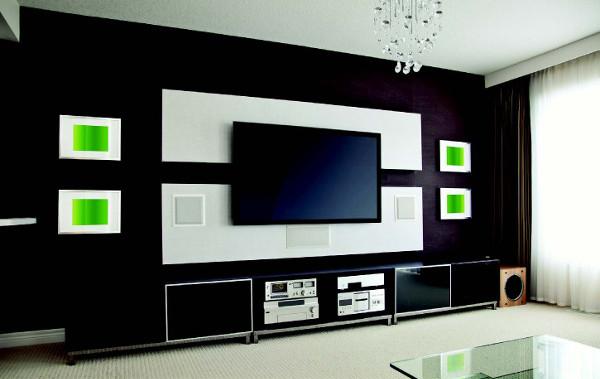Top Home Theater Design Mıstakes, Part Three

If you’ve hung with me so far, thanks. I hope that you’ve learned a few things along the way! If you missed Part One, I tackled three common mistakes: creating a space with 1) too many seats, 2) risers that are too low, and 3) a wall behind the screen that’s too light in color. In Part Two, I covered three more mistakes: 1) trying to do too much in a space, 2) using a screen that’s too small, and 3) creating a space with insufficient lighting.
To conclude the series, let’s take on four easily fixable issues that keep good systems from being great ones.
Subwooferus Minimus
When it comes to subwoofers, my motto is simple: buy the biggest and best model you can afford, and preferably more than one of them. (A common misconception is that adding subs gets you more/louder bass, when additional subs are actually used to deliver smoother, more even bass so you get the same experience from every seat.)
A good subwoofer raises the quality of the entire speaker system. When things are blowing up onscreen, gunshots are going off, and cars are smashing into one another, nothing delivers emotion and impact like a massive bass pressure wave punching you in the chest. I’ve visited some pretty large rooms that used a single, dinky subwoofer when multiple subs with 12-inch (or larger) drivers should have been employed. In such situations, what invariably happens is that the small sub gets turned up too loud, which causes it to overload and produce distorted sound.
Unnecessary Distractions
Although your focus should be entirely on the screen when it’s show time, I can’t tell you how many people feel a need to clutter up their movie viewing space with random bits, either on the sidewalls or directly around the screen. Pictures and posters are big offenders as the glass and frames are often highly reflective — both visually and sonically. In a darkened movie room, these can create a weird and distracting “second screen” effect. Bass-heavy soundtracks can cause glass trinkets and small items on shelves to rattle — another major pet peeve of mine. And while it often isn’t possible to locate electronics out of the viewers’ sight line, it helps to take whatever steps necessary to diminish the cityscape of twinkling blue, green, yellow, and red LEDs at the front of the room.
Poorly Placed Speakers
It would be no exaggeration to say Dolby Laboratories wrote the book on speaker placement for surround-sound systems, so the Dolby Speaker Placement Guide is a great place to start if you’re wondering where your speakers should go. But even when optimal isn’t possible, it’s pretty easy to avoid horrible positioning. You should always sidestep placing front left/right and center speakers in the ceiling. If you must install them there, be sure to use models specifically designed for the task like Definitive Technology’s UIW RSS II or Triad’s line of in-ceiling speakers.
While it should go without saying that speakers need to be out in the open without anything placed in front of them, I apparently still need to say it. That means no candles, books, pictures, decorative wreaths. Nothing. Also, don’t place surround speakers in front of the listening position. And while your decorator might hate the look of your subwoofer (and other speakers), placing it in cabinetry will compromise performance.
Using Old Gear
The final thing that I find repeatedly hinders new installations is people’s insistence on reusing their old gear. While some components like amplifiers and speakers are “timeless” and can be reused if properly cared for, surround receivers and displays don’t age gracefully and should almost always be replaced.
Technology advancements like new HDMI formats make integrating older gear a compromised, jerry-rigged affair. Now, I get that you paid good money for that stuff and want to use it until it dies. But that mentality doesn’t apply to the current digital era, so placing a dinosaur in a modern installation will not only compromise the experience, it will mean missing out on things like room correction, music streaming, high dynamic range video, and more.





























































